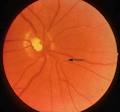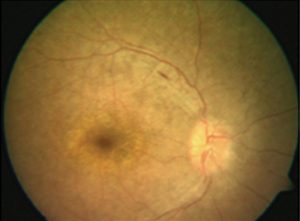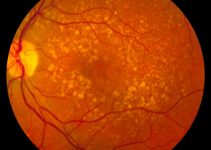Are you experiencing extreme sensitivity to any form of light or haziness in the eyes? It could be that you are suffering from Amaurosis. Read and know about this visual disability, including its types, symptoms, causes, diagnosis, and treatment.
Amaurosis Definition
Page Contents
It refers to a partial or complete visual loss or impairment that may occur without an observable damage in the eye. It is most often a symptom of a medical condition or may occur in people at high acceleration as in flight. The word was formerly known in Latin as “gutta serena” where “gutta” means ‘drop’ and “selena” stands for ‘clear’. The name referred to the fact that this form of blindness does not have a clearly known cause and the anterior segment of the eye of patients tends to be clear without any cataract or inflammation.
Amaurosis Types
This particular ocular disorder is classified into four types, each having its own causes and symptoms.
Leber’s congenital amaurosis (LCA)
It is a genetic form of the disorder that primarily affects the retina that constitutes the light-sensitive layer of tissue at the back of the inner eye. It generally appears at birth but may also take the first few months of life to occur. It is characterized by severe loss of vision and other eye-related disorders. Some patients may also experience abnormalities in the Central Nervous System.
Amaurosis fugax
Picture 1 – Amaurosis fugax
It is a temporary loss of vision in one eye due to reduced blood flow to the retina that only lasts for a shorter period. Some patients describe the condition as a gray or black shade coming down over the eye. In some cases, patients are found to suffer permanent vision loss.
Quinine amaurosis
Quinine is often used as an anti-malarial drug and also to treat other medical conditions, such as leg cramps or Restless Leg Syndrome. But an overdose of it may lead to complications such as loss of vision. Patients of this particular disorder may experience partial vision loss in both eyes.
Thiamine-related cerebrocortical necrosis
It usually occurs in cattle and other ruminants (hoofed mammals like bison, goat). The cause of this disorder is not fully understood. However, it is suspected to have a strong association to a deficiency of Vitamin B1 or Thiamine.
Amaurosis symptoms
Each type of this disorder is characterized by a wide variety of symptoms.
Leber’s congenital amaurosis
It is marked by problems like:
Nystagmus – It involves involuntary roving or jerking movement of the eyes.
Photophobia – Patients may develop abnormal intolerance to bright light such as sunlight, fluorescent light and incandescent light. In extreme cases, any form of light can be irritating.
Franceschetti’s Oculo-digital reflex – Children suffering from it always have a tendency to press, poke or rub their eyes with a knuckle or finger. It is generally considered to be a habitual reflex.
Deep set eyes – Individuals suffering with LCA always have sunken or deep-seated eyes.
Hyperopia – Patients may have greater difficulty in seeing objects closer to them than the distant ones. The condition is often referred to as “farsightedness”. It occurs due to shortening of the eyeball, causing difficulty focusing on near objects.
Keratoconus – There is a degeneration of the structure of the cornea, the clear tissue covering the front of the eye. The shape of the cornea slowly changes shape from normal to round.
Amaurosis fugax
The classic sign of this form is:
Obscure vision – In this form, patients tend to have a foggy vision. It is classically described as a curtain descending over the eyes that obstructs the vision.
Quinine amaurosis
The disorder gives rise to symptoms like:
Blurred vision – Patients lack sharpness of vision and are unable to see minute details.
Headache – Patients might often complain of pain or discomfort in the head or scalp that could be associated with this form of the disorder.
Thiamine-related cerebrocortical necrosis
The major symptoms arising due to this condition are:
Flickering of the eye – The upper eye lid may begin to twitch along with the lower one, which can cause annoyance to patients. Flickering occurs when there is contraction in the eye muscles.
Amaurosis Causes
This form of visual loss can be related to a number of causes that may include:
Autosomal recessive inheritance
The inheritance pattern of LCA is autosomal recessive which means both parents are healthy carriers of a mutated gene. There is always a high risk that a child will inherit the mutated genes, one from each parent. But in some cases, the child may inherit only one mutated gene from either parent. This might decrease the chances of development of this disorder.
Carotid artery disease
The condition is marked by a constriction or blockage of the carotid arteries. These arteries, located on either side of the neck, provide the main blood supply to the brain. Sticky, fatty substances called plaque accumulates in the inner lining of the arteries. Amaurosis fugax occurs when a piece of this plaque breaks off and travels to the retinal artery in the eye blocking the blood supply to the retina. This condition is often referred to as “Atherosclerosis.” Vision loss continues as long as the retinal artery remains blocked.
Migraine
Migraine can cause spasms and narrowing of the arteries that supply blood to the eye. This can often lead to temporary loss of vision.
Hypertension
Abrupt elevations of blood pressure may accelerate the development of Atherosclerosis, affecting the retinal circulation.
Smoking
It is one of the major causes of Atherosclerosis, the main risk factor for Amaurosis fugax.
Amaurosis Diagnosis
Proper diagnosis of this disorder is possible by the use of diagnostic techniques like:
Carotid Ultrasound
It is a non-invasive and safe procedure that makes use of high-frequency sound waves to examine the structure and function of the carotid arteries. These arteries supply oxygen-rich blood from the heart to the brain. This particular diagnostic method may show accumulation of plaque in the carotid arteries of individuals suffering with Amaurosis.
Magnetic resonance angiography
It involves a cluster of techniques based on Magnetic Resonance Imaging to detect any kind of blockage, usually a clot, in the carotid arteries of the neck.
Electroretinography (ERG)
It is an eye test used to detect abnormal function of the retina. In this test, rods and cones that form the light-sensitive cells of the eye are examined. During the test, an electrode is placed on the cornea (front of the eye) to measure the electrical response of the eye to light. Readings that are taken during this procedure help evaluate inherited disorders of the retina.
DNA test
Genotyping, DNA extraction, dideoxy sequencing are some of the common genetic tests conducted on patients to detect LCA.
Cholesterol test
Quantitative analysis of the cholesterol levels in patients with vision loss may help in detecting Amaurosis fugax.
Blood sugar test
Patients are generally advised to undergo blood glucose test in order to detect diabetes, which is often regarded as a common cause of episodic blindness.
Amaurosis Treatment
An appropriate treatment plan is generally decided by physicians on the basis of the severity of the disorder as well as on the results of the various diagnostic tests.
Blood-thinning medication
Anticoagulants or blood thinners like aspirin, warfarin are often administered to patients to lower the risk of stroke.
Low-vision aids
These are generally used when conventional spectacles and surgery are not effective. Individuals suffering from LCA may benefit from the use of low-vision aids, which consists of high-powered spectacles, optical aids (like magnifiers) or electronic aids such as CCTV.
Carotid endarterectomy
It is a surgical procedure that is usually performed when a large part of the carotid artery appears to be blocked. Here the inner lining of the carotid artery, that has become thickened or damaged due to the accumulation of plaque, is removed.
Diet change
Foods that are high in cholesterol and saturated fats like beef, egg and pork should be strictly avoided. These should be replaced with lower cholesterol eatables such as fruits, vegetables, lentils and fat-free milk.
Amaurosis does not cause any permanent visual disability. However, in severe cases immediate medical assistance should be availed to avoid any sort of serious damage to the eyes.
References:
http://en.wikipedia.org/wiki/Amaurosis
http://rarediseases.about.com/od/rarediseasesl/a/lca05.htm
http://www.wisegeek.com/what-is-amaurosis.htm
http://www.nlm.nih.gov/medlineplus/ency/article/000784.htm




No Responses